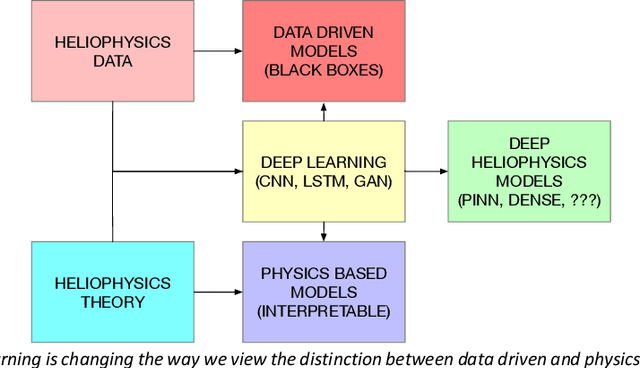Chris Bard
Deep Learning for Space Weather Prediction: Bridging the Gap between Heliophysics Data and Theory
Dec 27, 2022
Abstract:Traditionally, data analysis and theory have been viewed as separate disciplines, each feeding into fundamentally different types of models. Modern deep learning technology is beginning to unify these two disciplines and will produce a new class of predictively powerful space weather models that combine the physical insights gained by data and theory. We call on NASA to invest in the research and infrastructure necessary for the heliophysics' community to take advantage of these advances.
A Curriculum-Training-Based Strategy for Distributing Collocation Points during Physics-Informed Neural Network Training
Nov 22, 2022Abstract:Physics-informed Neural Networks (PINNs) often have, in their loss functions, terms based on physical equations and derivatives. In order to evaluate these terms, the output solution is sampled using a distribution of collocation points. However, density-based strategies, in which the number of collocation points over the domain increases throughout the training period, do not scale well to multiple spatial dimensions. To remedy this issue, we present here a curriculum-training-based method for lightweight collocation point distributions during network training. We apply this method to a PINN which recovers a full two-dimensional magnetohydrodynamic (MHD) solution from a partial sample taken from a baseline MHD simulation. We find that the curriculum collocation point strategy leads to a significant decrease in training time and simultaneously enhances the quality of the reconstructed solution.
 Add to Chrome
Add to Chrome Add to Firefox
Add to Firefox Add to Edge
Add to Edge